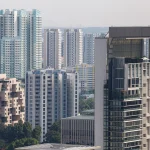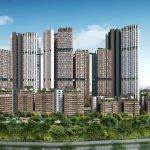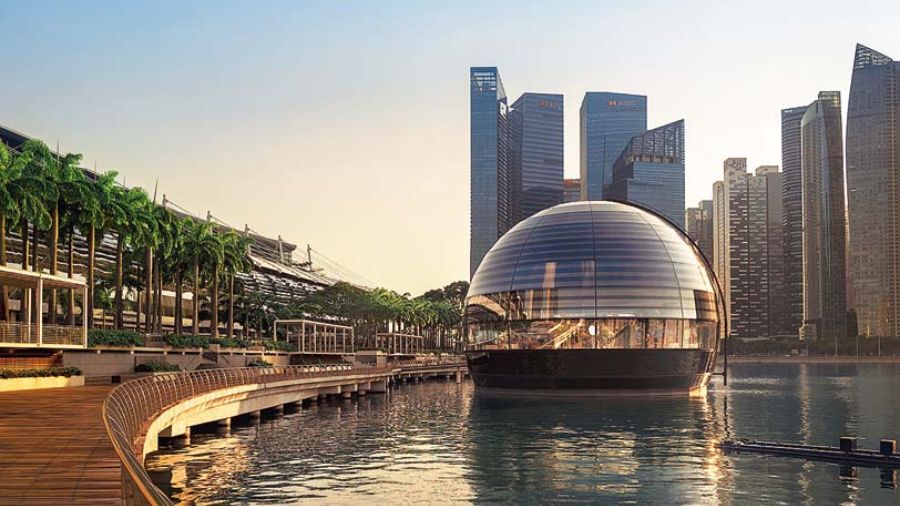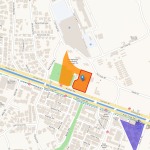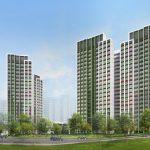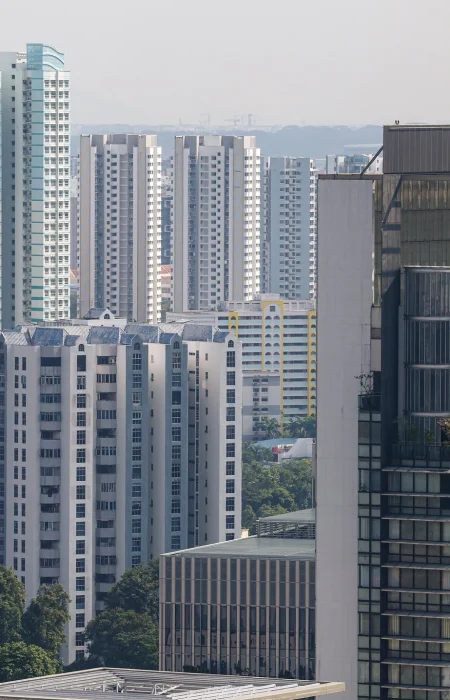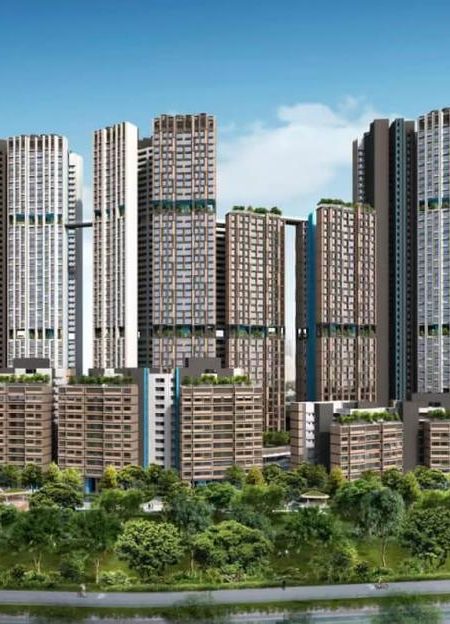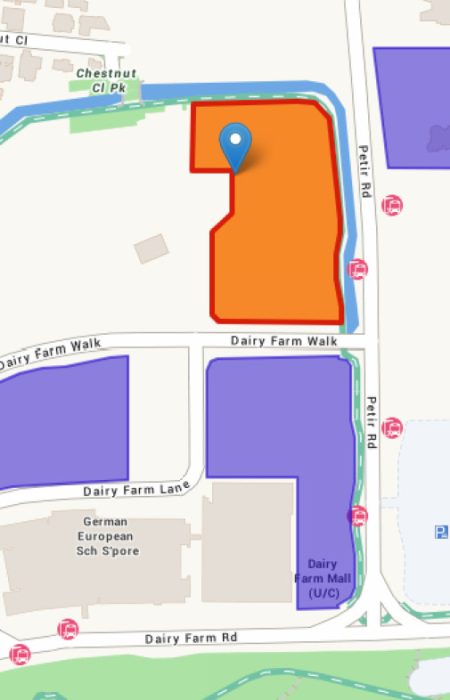Singapore’s property market in October 2025 continues to showcase remarkable balance amid shifting economic conditions. While demand remains resilient, price growth is moderating, giving both buyers and investors a clearer outlook on long-term stability. The month is marked by subtle changes in HDB resale performance, new condo launches, and a cooling rental market, alongside continued Government Land Sales (GLS) activity that hints at sustainable housing supply.
1. HDB Resale Market Shows Signs of Cooling
After nearly four years of consecutive price hikes, Singapore’s HDB resale market is finally showing early signs of stabilisation.
- Price Growth Slows: The resale price index rose only 0.4% in Q3 2025, a noticeable slowdown compared to the 2–3% quarterly increases seen in 2023–2024.
- Fewer Million-Dollar Flats: The number of million-dollar HDB transactions dropped by 9% compared to last quarter, suggesting demand is softening in the luxury public housing segment.
- Buyer Preference Shift: Larger flats like 4-room and 5-room units in well-connected towns such as Tampines, Toa Payoh, and Queenstown remain in high demand, especially near MRT lines.
- New Supply Impact: The steady release of Build-To-Order (BTO) projects under the Prime Location Public Housing (PLH) model is offering more alternatives to resale buyers.
Overall, the HDB resale market is entering a phase of healthy moderation, where affordability is improving and speculative activity is under control.
2. Private Condominium Launches Gain Momentum
In contrast to the cooling HDB market, private condominiums continue to attract attention thanks to strategic launches and competitive pricing.
- Notable Launches: Projects like Faber Residence by GuocoLand, Lentor Vista by UOL, and Tampines Grand Residences have drawn strong interest from both locals and foreign investors.
- Price Movement: Average condo prices increased by 1.7% in Q3 2025, driven mainly by city-fringe (RCR) developments.
- Shift Toward Compact Units: Developers are focusing on smaller, more affordable units between 500–700 sq ft to cater to younger buyers and investors.
- Sustainable Sales Pace: Launches are more strategically timed to prevent market oversupply while still addressing pent-up demand.
Condo buyers remain price-conscious, but well-located projects with mixed-use components and proximity to MRT lines are seeing steady absorption rates.
3. Rental Market Eases as More Supply Enters
After years of double-digit rent growth, Singapore’s rental market is finally seeing a cooling trend.
- Moderation Continues: Overall rental rates dipped 0.8% month-on-month in September 2025, marking the second consecutive monthly decline.
- New Supply Impact: Around 3,000 private residential units were completed in Q3, particularly in the East Coast and Tampines regions, increasing rental choices.
- Tenant Preferences: Foreign professionals and digital nomads are showing renewed interest in suburban areas where rents are 20–30% lower than the city centre.
- HDB Rentals Hold Steady: The HDB rental market remains firm as tenants await completion of upcoming BTO flats and Executive Condominiums (ECs).
While rental prices remain elevated compared to pre-pandemic levels, experts predict a gradual correction through early 2026, restoring affordability for long-term tenants.
4. Government Land Sales (GLS): Ensuring Long-Term Stability
The Singapore government continues to release strategic GLS sites to maintain housing supply and curb speculative spikes.
- October 2025 Highlights:
- Queenstown – Commonwealth Avenue Site: Expected to yield about 800 residential units in a prime city-fringe location.
- Jurong Lake District Plot: Mixed-use development with residential, retail, and commercial elements to support decentralised growth.
- Tampines North Parcel B: Targeted toward affordable family housing below $2,000 psf.
- Developer Sentiment: Developers are cautious but optimistic, given Singapore’s stable employment market and consistent housing demand.
This balanced release strategy ensures that the property market remains supply-aligned, reducing the risk of overheating while supporting long-term sustainability.
5. Mortgage Rates and Buyer Confidence
One of the most talked-about aspects in 2025 is the stabilisation of home loan rates.
- Interest Rates Easing: With the U.S. Federal Reserve signalling possible rate cuts in 2026, local mortgage rates have steadied around 3.3% to 3.5%.
- Refinancing Surge: Many homeowners are locking in fixed-rate packages to secure lower monthly repayments.
- Buyer Sentiment: Confidence is improving as financing becomes more predictable, encouraging genuine home purchases over speculative investment.
The stabilisation of financing costs is a key driver supporting overall property market confidence in Q4 2025.
6. Foreign Investment: Controlled but Consistent
Although higher Additional Buyer’s Stamp Duty (ABSD) rates have reduced foreign speculative activity, Singapore continues to attract high-quality, long-term investors.
- Investor Demographics: Buyers from China, India, Malaysia, and Hong Kong remain active in the luxury condo and mixed-use property sectors.
- Luxury Segment Stability: High-end developments in Orchard, Marina Bay, and Sentosa Cove remain sought-after due to limited supply and strong capital preservation.
- Corporate Investments: Foreign corporate entities are entering commercial and strata-titled properties, diversifying beyond residential.
Singapore’s transparent regulations, safe environment, and strong currency continue to make it a preferred global real estate hub.
7. Market Outlook for 2026: Sustainable and Balanced
Looking ahead, market analysts expect moderate but steady growth across all housing categories in 2026.
- HDB Forecast: Prices expected to rise 1–3%, supported by first-time buyers and consistent supply.
- Private Market: Prices could grow 2–4%, reflecting sustainable demand.
- Rental Market: Expected correction of 5–8% as more new supply enters the market.
- Government Policy: Continued focus on housing affordability and transparency will ensure market equilibrium.
The government’s long-term strategy remains clear — to maintain a stable, sustainable, and inclusive housing market for all Singaporeans.
Conclusion
The Singapore Property Market in October 2025 stands as a testament to the nation’s ability to balance growth with stability. While the resale HDB segment is cooling and the rental market is easing, private condos continue to perform steadily, supported by solid buyer confidence and smart policy planning.
For buyers, this is an opportunity to make informed, long-term investments in well-connected neighbourhoods. For investors, focusing on upcoming regional hubs like Jurong Lake District, Lentor, and Tampines North could yield consistent returns in the next few years.



